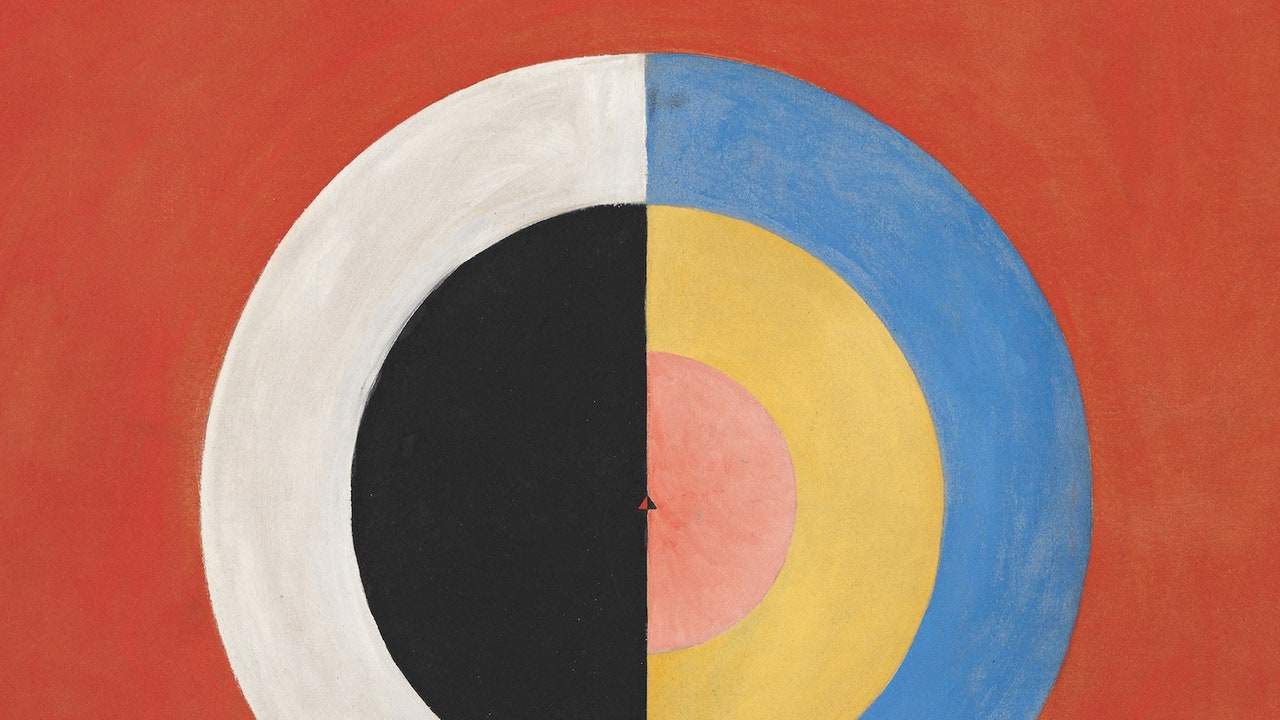In his preface to Abstract Art: A Global History—arriving this month from Thames & Hudson—Joseph Low (“Pepe”) Karmel, a professor of art history at New York University, writes that the goal of the book is “to demonstrate different ways of looking at abstraction and to encourage readers to respond to a wider range of abstract art.” A simple idea in theory, it proves a massive undertaking in practice, demanding a complete rethinking of long-established narratives. With Abstract Art, Karmel approaches the field not as a steady tunneling toward nothingness, as figures and other discernible objects fell away, but as something more dynamic—and much less white, Western, and male. There is no such thing as pure form, he insists; abstract art has always been “rooted in experience of the real world,” wherever and whenever it was made. He identifies five major categories of subject matter—bodies, landscapes, cosmologies, architectures, and signs and patterns, tracing each theme over 100 years, from 1915 to 2015—and works to consider the perspectives of women and artists of color not generally included in the discourse. (A work by the Swedish mystic Hilma af Klint claims the cover; while the Indian-born artist Zarina provides the frontispiece and Wosene Worke Kosrof, an Ethopian painter, the back cover.)
Here, Karmel discusses the book, some of his greatest mentors, and the particular challenges (and pleasures) of teaching art right now.
First, I’d love to know how you came to study art—what it was that turned you onto the field, and to contemporary art in particular.
I was an aimless, young college student who thought that I might be a novelist, because my dad was a novelist. So I finished college and I was writing a really, really bad novel that, fortunately for everyone involved, never got published. Meanwhile, I’d been collecting photography, and a friend of mine, an art critic, said, “Hey, you should write about photography for Art in America.” I was like, I have no credentials! I’ve never taken an art course! And he was like, “It doesn’t matter.” So I started writing about photography for Art in America, [and later] about painting and sculpture. Then I got a gig teaching at the School of Visual Arts, and after a couple of years, it kind of crept up on me that I liked this art history thing, and if I was going to do it for a career, I should probably learn something about it. So I went to graduate school at the Institute of Fine Arts, where I had just amazing teachers—I studied with Kirk Varnedoe and William Rubin from MoMA, who was the most powerful man in the art world from the early 1970s until sometime around 1998. He later asked me to help organize the Cubism exhibition at the museum in 1989. And then I really intended to teach, so I got a part-time job teaching when I finished my Ph.D in ’93. Later, Kirk was chief curator at MoMA, and I had the amazing experience of working with him on the Jackson Pollock retrospective that opened in ’98. When that was over, I got the job that I have now, teaching at NYU. That was, like, 20 years ago.
